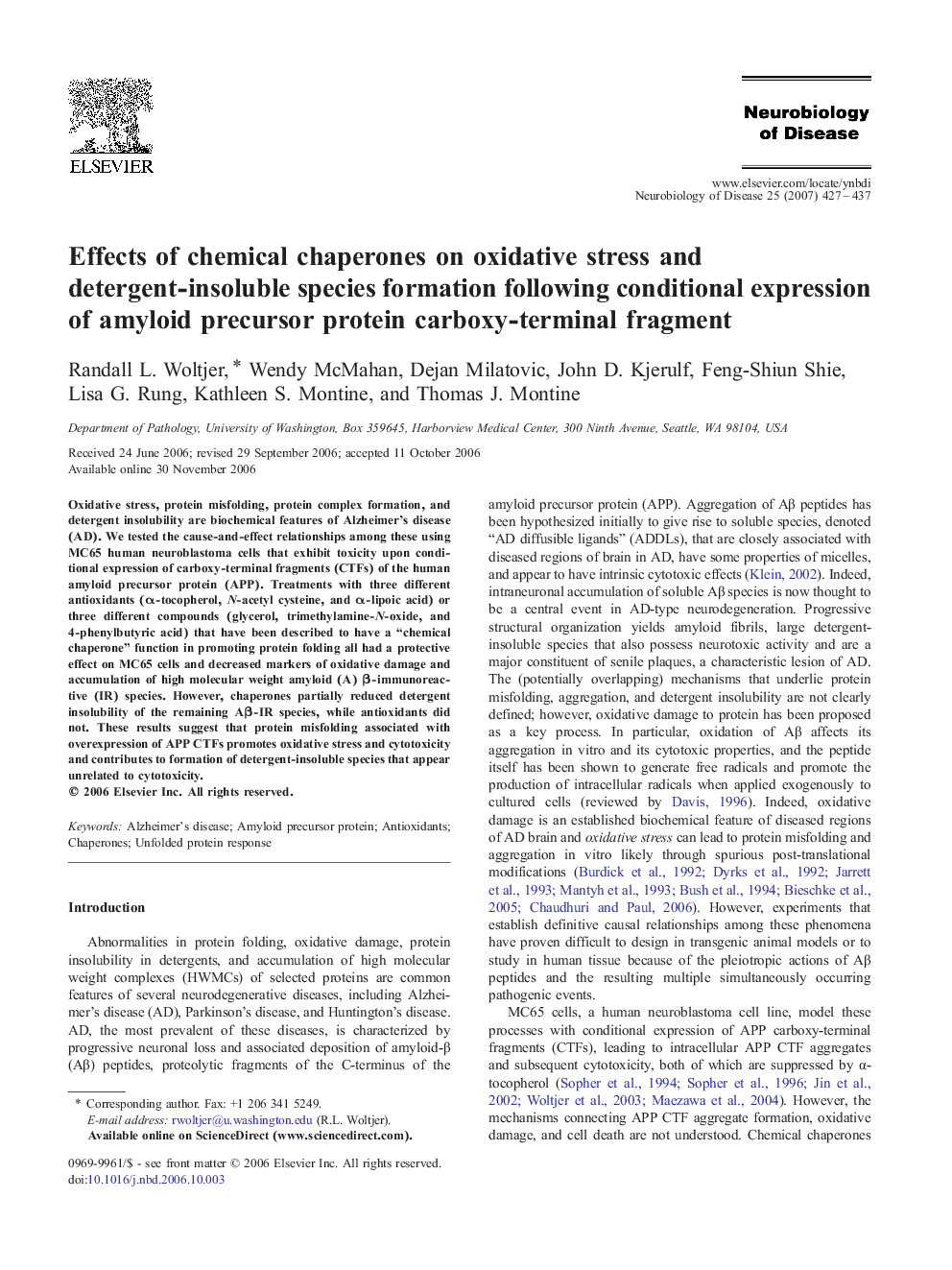| Article ID | Journal | Published Year | Pages | File Type |
|---|---|---|---|---|
| 3070754 | Neurobiology of Disease | 2007 | 11 Pages |
Oxidative stress, protein misfolding, protein complex formation, and detergent insolubility are biochemical features of Alzheimer’s disease (AD). We tested the cause-and-effect relationships among these using MC65 human neuroblastoma cells that exhibit toxicity upon conditional expression of carboxy-terminal fragments (CTFs) of the human amyloid precursor protein (APP). Treatments with three different antioxidants (α-tocopherol, N-acetyl cysteine, and α-lipoic acid) or three different compounds (glycerol, trimethylamine-N-oxide, and 4-phenylbutyric acid) that have been described to have a “chemical chaperone” function in promoting protein folding all had a protective effect on MC65 cells and decreased markers of oxidative damage and accumulation of high molecular weight amyloid (A) β-immunoreactive (IR) species. However, chaperones partially reduced detergent insolubility of the remaining Aβ-IR species, while antioxidants did not. These results suggest that protein misfolding associated with overexpression of APP CTFs promotes oxidative stress and cytotoxicity and contributes to formation of detergent-insoluble species that appear unrelated to cytotoxicity.
